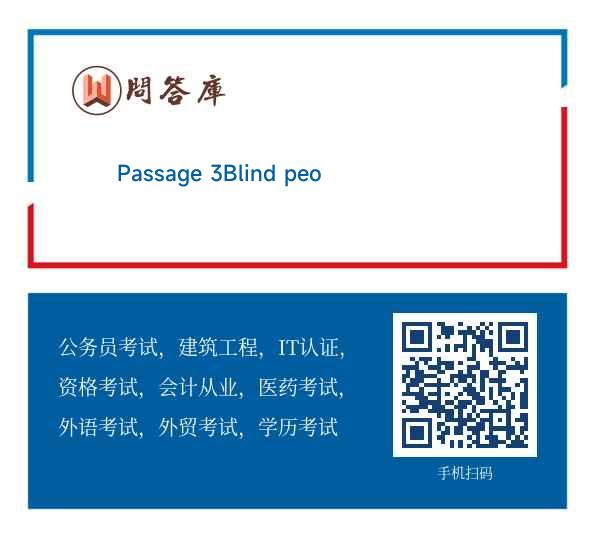Passage 3Blind people can “see” things by usin
问题详情
Passage 3
Blind people can “see” things by using other parts of their bodies. This fact may help us to understand our feelings about color. If blind people can sense color differences, then perhaps we, too, are affected by color unconsciously(无意识地)。
(76)Manufacturers(生产商)have discovered by experience that sugar sells. Badly in green wrappings, that blue foods are considered unpleasant, and that cosmetics(化妆品) should never be packaged in brown. These discoveries have grown into a branch of color psychology.
Color psychology now finds application in everything from fashion to decoration. Some of our preferences are clearly psychological. Dark blue is the color of the night sky and therefore associated with calm, while yellow is a day color with associations of energy and incentive(刺激). For a primitive man, activity during the day meant hunting and attacking, while he soon saw red as the color of blood and anger and the heat that came with effort. And green is associated with passive defense and self-protection.
(77)Experiments have shown that colors, partly because of their psychological associations, also have a direct psychological effect. People exposed to bring red show an increase in breath, in heartbeat and in blood pressure; red is exciting. Similar exposure to pure blue has exactly the opposite effect; it is a calming color. Because of its exciting meaning, red is chosen as the signal for danger, but closer analysis shows that a vivid yellow can produce a more basic state of alarm. So fire engines and ambulances in some advanced communities are now rushing around in bright yellow colors that stop the traffic dead.
11. Our preferences for certain colors are _______ according to the passage.
A. associated with the time of the day
B. dependent on our personalities
C. are linked with our ancestors
D. partly due to psychological factors请帮忙给出正确答案和分析,谢谢!
参考答案
正确答案:A
全文翻译:第三篇盲人可以用身体的其他部位来“看”东西。这种事实可以帮助我们理解我们关于颜色的感觉。如果盲人能够感知颜色的不同,那么我们可能也无意识地受到了颜色的影响。生产商通过经验发现,绿色包装的糖卖得不好,蓝色的食品被认为是令人不愉快的,化妆品绝不应该用棕色来包装。这些发现已经成为颜色心理学的一个分支。现在发现,颜色心理学应用在从时尚到装饰的一切事物上。我们的一些喜好很明显是心理的。深蓝色是夜晚天空的颜色,因此和平静有关,而黄色是白天的颜色,与精力和刺激有关。对一个原始人来说,白天的活动就是打猎和攻击,而他很快就看到了红色,这是努力相伴而来的血液和愤怒以及热量的颜色。而绿色与被动防御以及自我保护相关联。实验表明,颜色,因为他们与心理学关联,因此也有一个直接的心理效应。人表现出鲜红的颜色,表明了呼吸、心跳记忆血压的增加;红色是兴奋的表现。纯蓝色的类似表现具有完全相反的影响;它是使人平静的颜色。红色因为其有能使人兴奋的意义,因此被作为的危险的记号,但是更细的分析表明,生动的黄色能产生更基本的警告的意义。因此,在一些先进的社区,急急赶路的救火车和救护车用鲜艳的黄色阻止交通堵塞。
